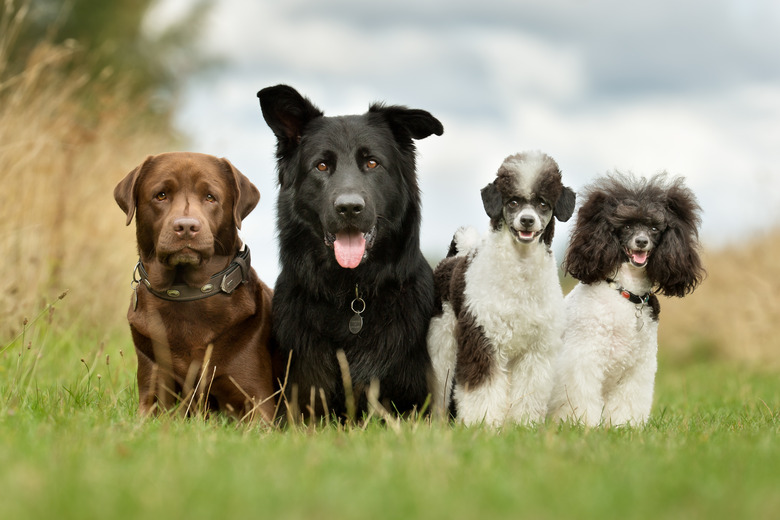Examples Of Genetic Diversity
Diversity can mean a lot of things. In an ecosystem, diversity can refer to the number of different species or ecological niches that are present. Scaling things up, within a region, there can be a diversity of ecosystems. If we move down to the species level, genetic diversity is how much genetic variation there is in a population. Genetic diversity is important because the more genes are in a population, the more likely that one of those genes will prove helpful in the face of threats such as climate change or a new disease. Genetic diversity is related to the ability of a species to adapt to a changing environment.
Domestic Dogs
Domestic Dogs
Humans have created distinct breeds of dogs within the species by selectively breeding individuals with traits that they want. The genetic variability within these breeds is decreased because their effective population size is limited by humans controlling their access to mates. The genetic variation among breeds, however, has increased as the different breeds diverged. The net effect is a population that has more genetic diversity than their closest wild cousin, the wolf (see reference 1).
Woody Plant Species
Woody Plant Species
Woody plants, such as trees, tend to have more genetic diversity, on the whole, than vascular plants, such as grasses. This holds true both within populations and within the different species. Part of the diversity is due to the size of each species' geographic range and how far they can move their genetic information, for example through wind pollination or animal seed dispersers. Much of the diversity of woody plants, however, remains a mystery and is likely tied to the evolutionary history of the individual species (see reference 3).
Generalist vs. Specialist Species
Generalist vs. Specialist Species
Generalists are very adaptable species that can adapt their behavior and diet to a changing environment. Coyotes are an example of a generalist species. Specialist species, by comparison, have developed very specific traits that let them take advantage of one particular resource. Hummingbirds are an example of a specialist species. Environments with more variability tend to favor generalist species and also more genetic diversity within species. While there are many exceptions, a rule of thumb might be that generalists have more genetic variability than specialists, in part because their environments require more adaptability (see reference 4).
The Cheetah
The Cheetah
Examples showing the importance of genetic diversity don't always come from the most diverse species. Cheetahs experienced a genetic bottleneck around 10,000 years ago, a point where their population was reduced to very low numbers and the remaining animals became inbred. Most species vary in about 20 percent of their genes, but cheetahs only vary by 1 percent. The low genetic variability makes debilitating and even lethal genetic disorders more common and leads to low reproductive success. If cheetahs survive as a species, it may be millennia before they fully recover their genetic diversity (see reference 2).
Cite This Article
MLA
Becker, Andrea. "Examples Of Genetic Diversity" sciencing.com, https://www.sciencing.com/examples-genetic-diversity-16445/. 9 March 2018.
APA
Becker, Andrea. (2018, March 9). Examples Of Genetic Diversity. sciencing.com. Retrieved from https://www.sciencing.com/examples-genetic-diversity-16445/
Chicago
Becker, Andrea. Examples Of Genetic Diversity last modified August 30, 2022. https://www.sciencing.com/examples-genetic-diversity-16445/
